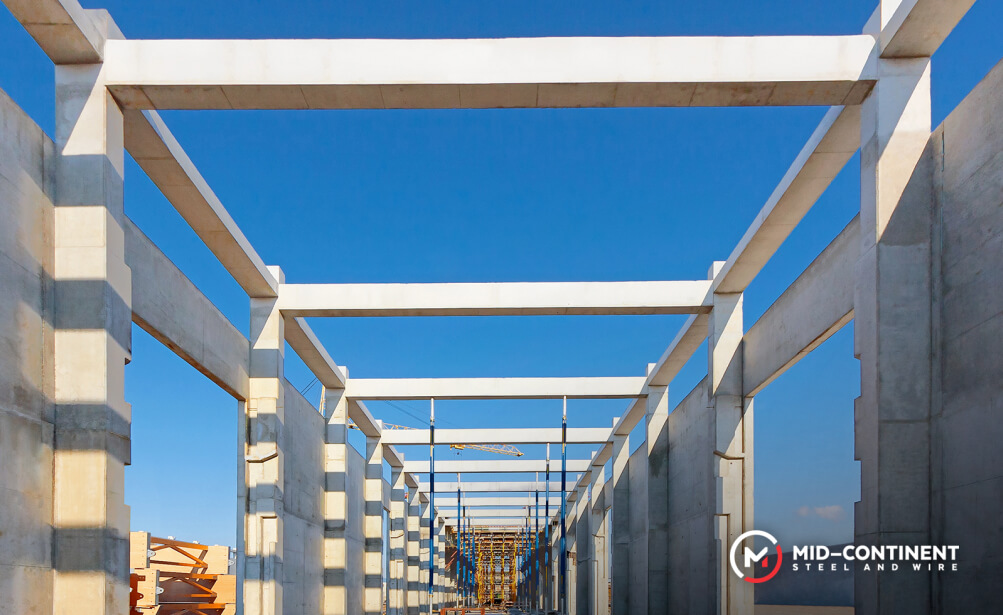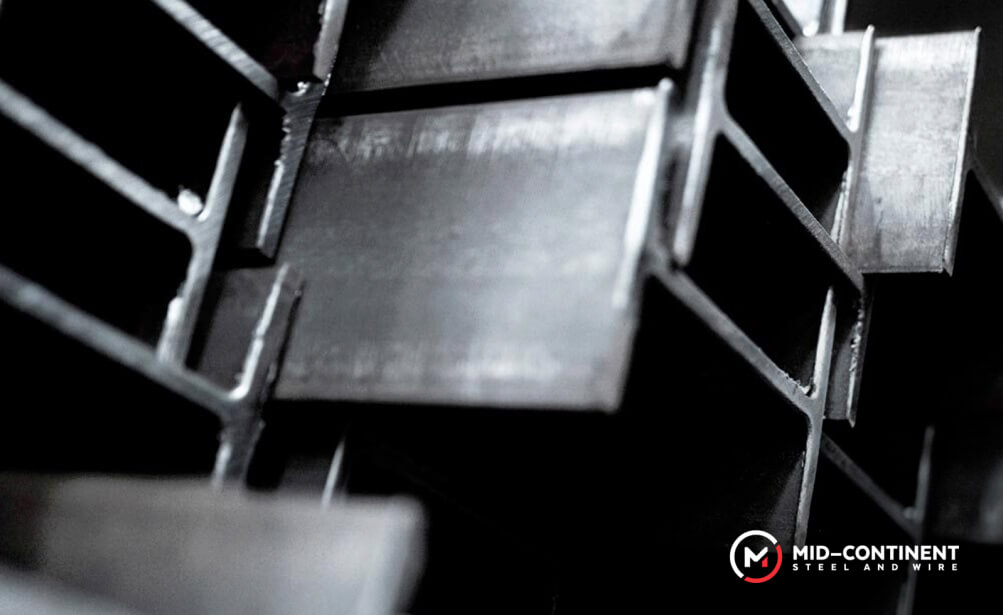
Beams for construction are essential structural elements. They provide support and stability to buildings and carry heavy vertical loads. Keep reading to get an overview.

Common types of beam materials
- Steel Beams: Commonly used due to their high strength-to-weight ratio and versatility. Steel beams come in various shapes such as I-beams, H-beams, and T-beams.
- Wooden Beams: Traditional choice for smaller structures and can be easily shaped and installed. They are widely used in prefabricated or modular construction systems, where components are manufactured off-site and assembled on-site.
- Concrete Beams: Often used in combination with reinforced steel for added strength and durability. Concrete beams are often employed in large-scale construction projects like bridges and high-rise buildings.

Beam Support
Simply Supported Beam: Supported at both ends by columns, walls, or other vertical supports. The supports allow the beam to rotate freely at its ends, and the reaction forces from the supports counteract the applied loads.
Fixed Beam: Supported and fixed at both ends, preventing rotation and translation. They provide maximum resistance to bending moments and shear forces. Fixed beams are often used in structures where stability and rigidity are critical.
Cantilever Beam: Supported at one end only, with the other end projecting into space. The supported end typically rests on a wall, column, or another structural element.
Continuous Beam: Supported at more than two points along their length, providing additional stability and load distribution. This reduces bending moments and deflections in the beam, making it suitable for longer spans and heavier loads.

Our Beams
Mid-Continent Steel and Wire beams are adaptable to different uses based on their shape, thickness, and mechanical properties. They are available in various grades and lengths.
S Beams: These are a type of structural steel beam with a distinctive S-shaped cross-section. These beams are widely used in construction and various structural applications due to their favorable structural properties. S-beams are designed to efficiently distribute loads, making them capable of supporting significant loads while minimizing material usage.
WF Beams: Characterized by their distinctive cross-section shape which resembles the letter W. WF beams are widely used in building construction for framing, supporting floor and roof loads, and creating structural frameworks. WF stands for “wide flange”.
If you want to build strong projects with resistant materials, get in touch with us. We’ll be happy to assist you in enhancing your construction.

